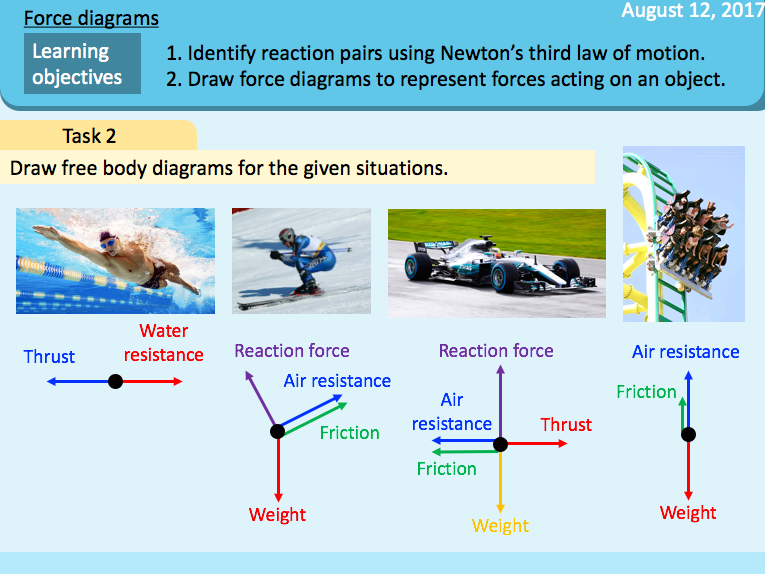


Forces in balance: Force diagrams
1. Identify reaction pairs using Newton’s third law of motion.
2. Draw force diagrams to represent forces acting on an object.
Level: GCSE, key stage 4
I am following the AQA science (physics) syllabus but this resource is suitable for anyone teaching KS3 or KS4 science (specifically physics).
Resources:
1. Powerpoint slides: powerpoint slides, compatible with a worksheet/handout. Slides contain information and tasks for pupils.
2. Notes (editable documents) for pupils: Use this as worksheet or handout. Pupils can take notes during lesson and complete tasks in this editable document.
Hope this resource is helpful for you. Please do let me know if there's any suggestions for improvement. I aim to upload more lessons following this topic. Check out some bundles I've put together.
Enjoy!
Get this resource as part of a bundle and save up to 72%
A bundle is a package of resources grouped together to teach a particular topic, or a series of lessons, in one place.
Forces in balance: Newton's laws, types of forces, forces diagrams, vector and scalar
This bundle contains 6 lessons to of essential topics for forces for key stage 3 and 4 pupils. They are GCSE materials. Powerpoints and worksheets are ready to be used or you can edit them easily. Enjoy!
Forces in balance: Newton's laws, force diagrams, vector diagrams
This bundle contains 4 lessons for key stage 3 and 4 pupils. It covers GCSE topics in physics, such as Newton's laws, types of forces, force diagrams, reaction pairs, vectors and scalars. Powerpoints and worksheets are ready to use and are editable. Enjoy!
Something went wrong, please try again later.
Nice resource, saved me a lot of planning time.
Great resource - a little question about the diagrams though. You state earlier in the presentation that reaction pairs must be of the same type (gravity-gravity, contact-contact etc). However, in the free body diagrams - you include the weight due to gravity of an object on a slope (for example) but not the contact force of object on the slope so technically these are of different types. Is there a way of correct this to make them more accurate? I know weight originates from CofM but it just feels odd to have the reaction pair of different types.
Solid lessons, beautiful presentations
Report this resourceto let us know if it violates our terms and conditions.
Our customer service team will review your report and will be in touch.